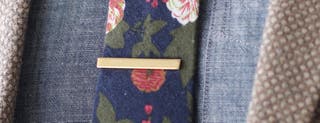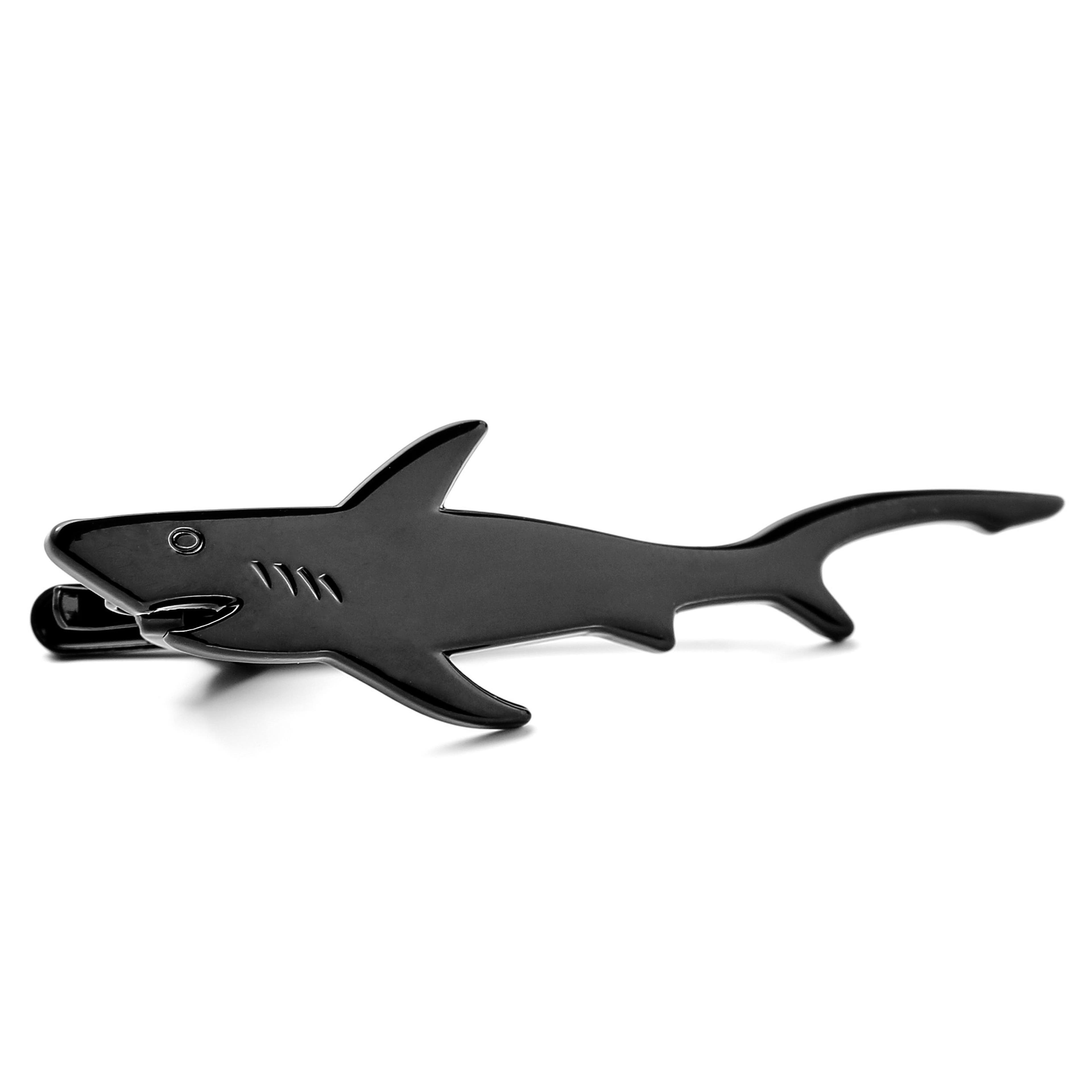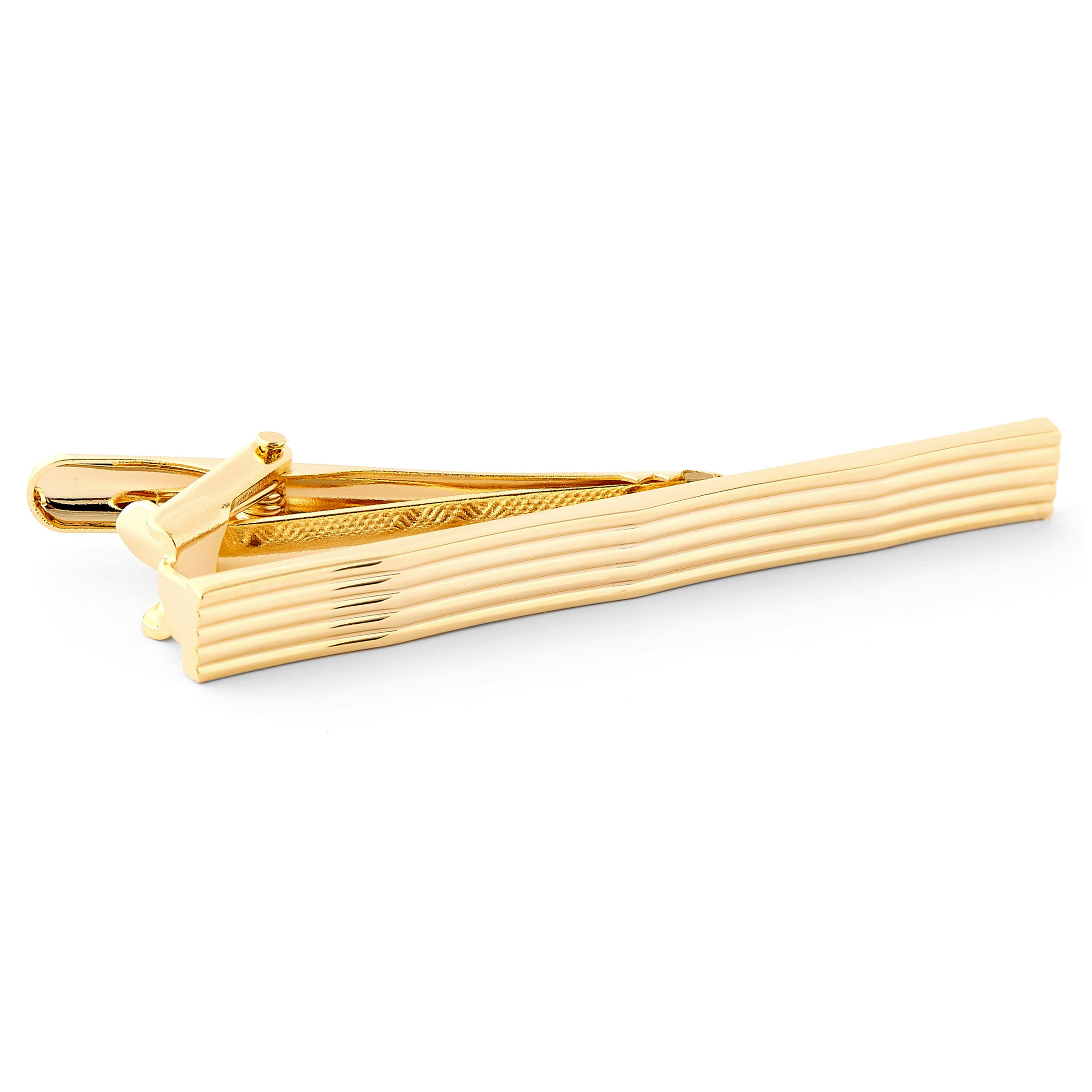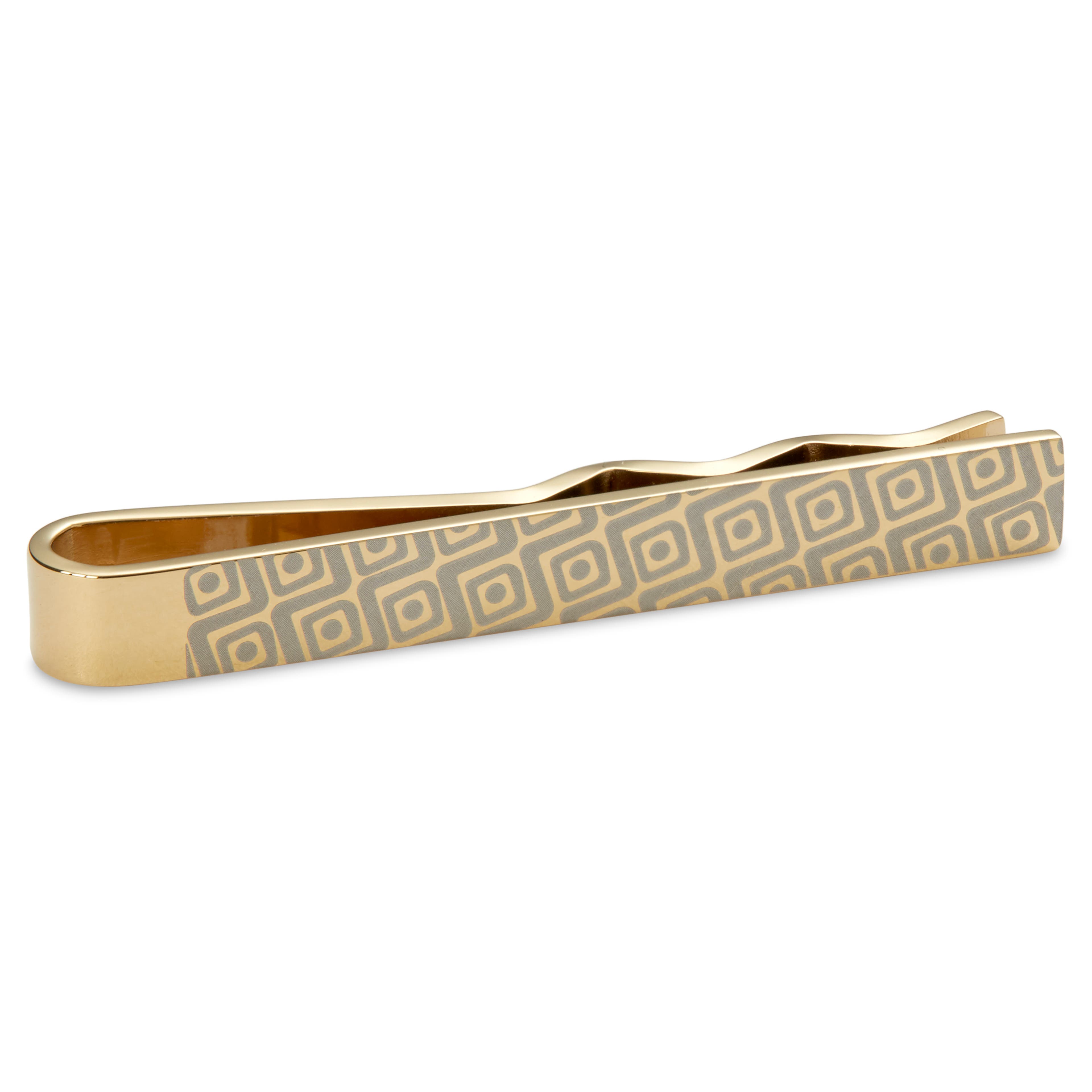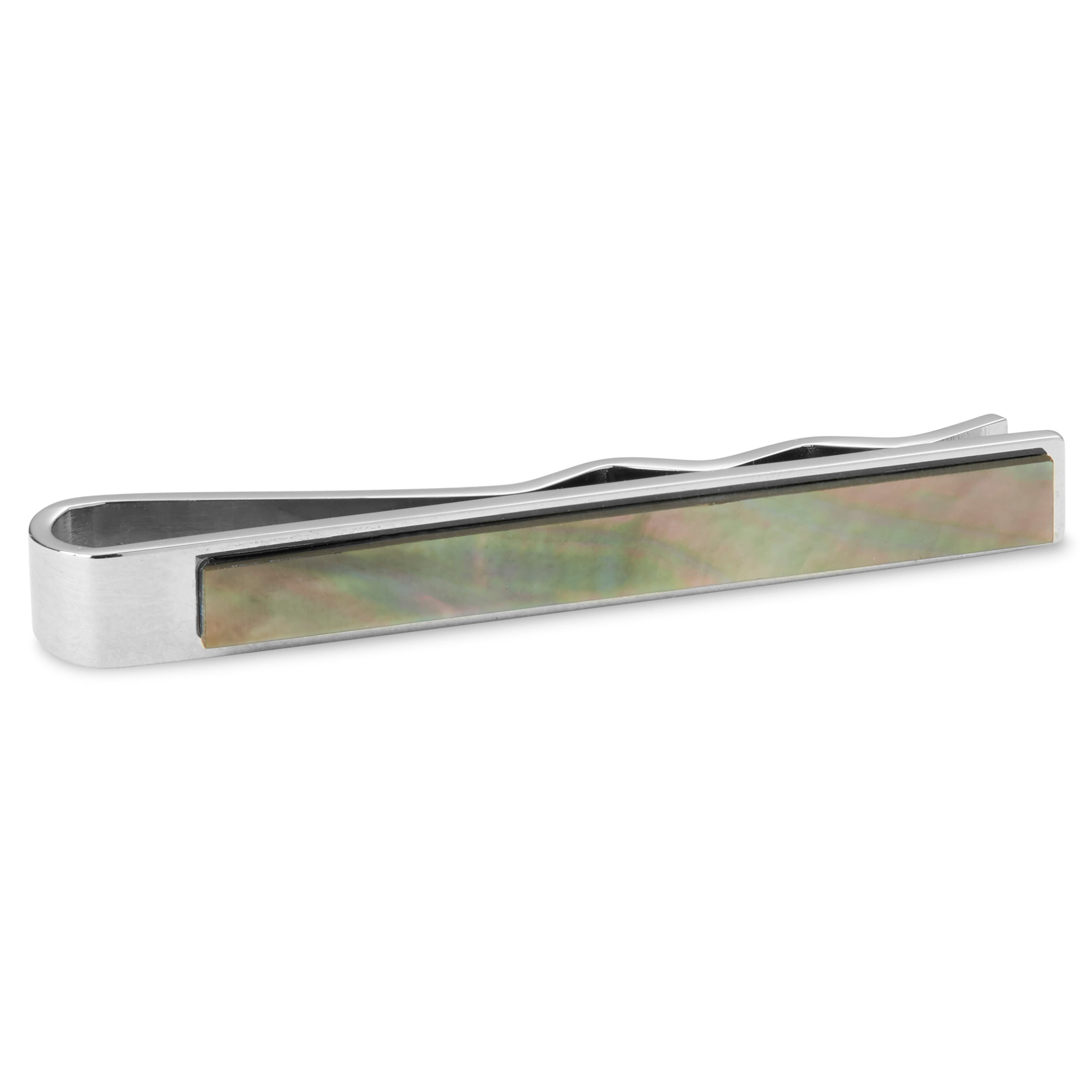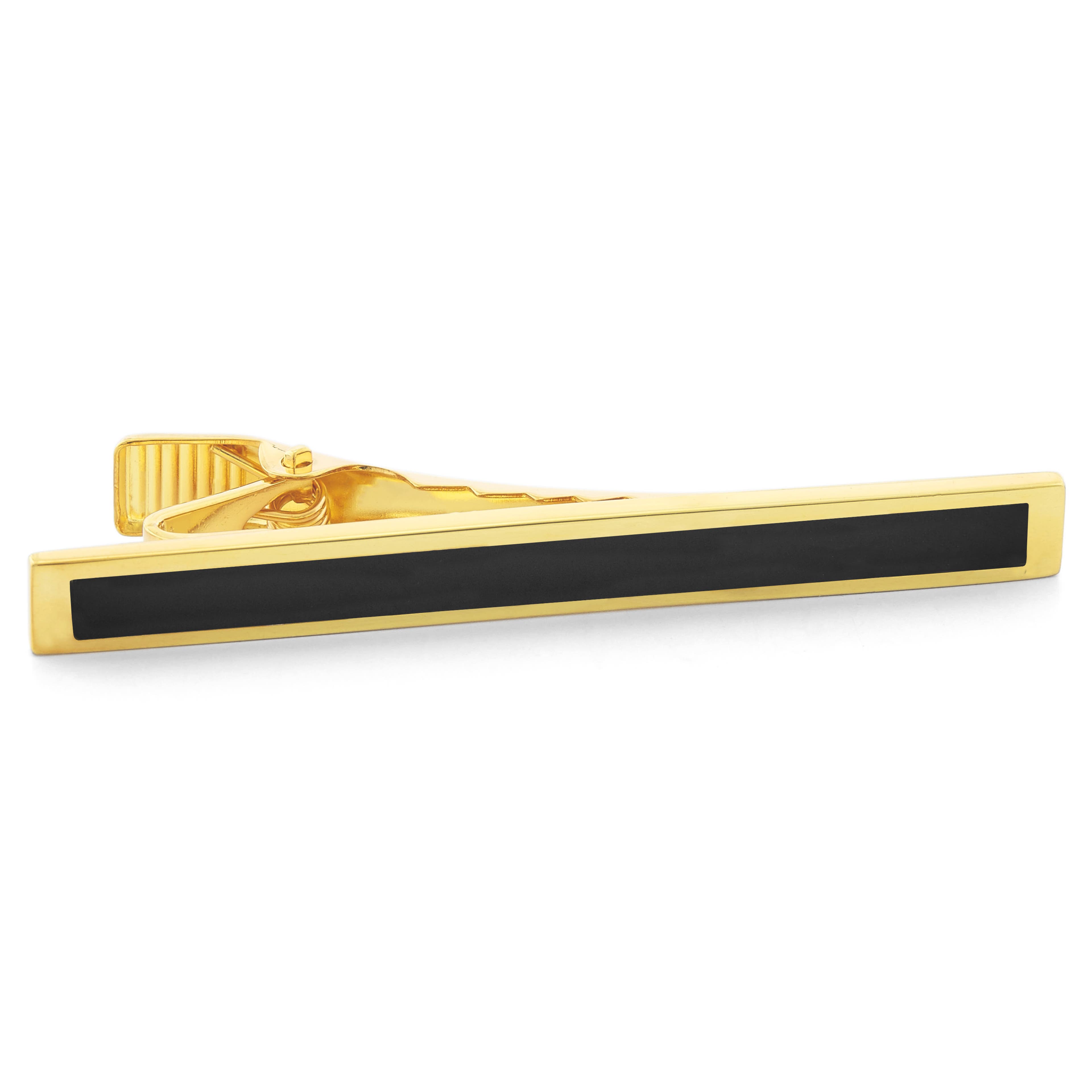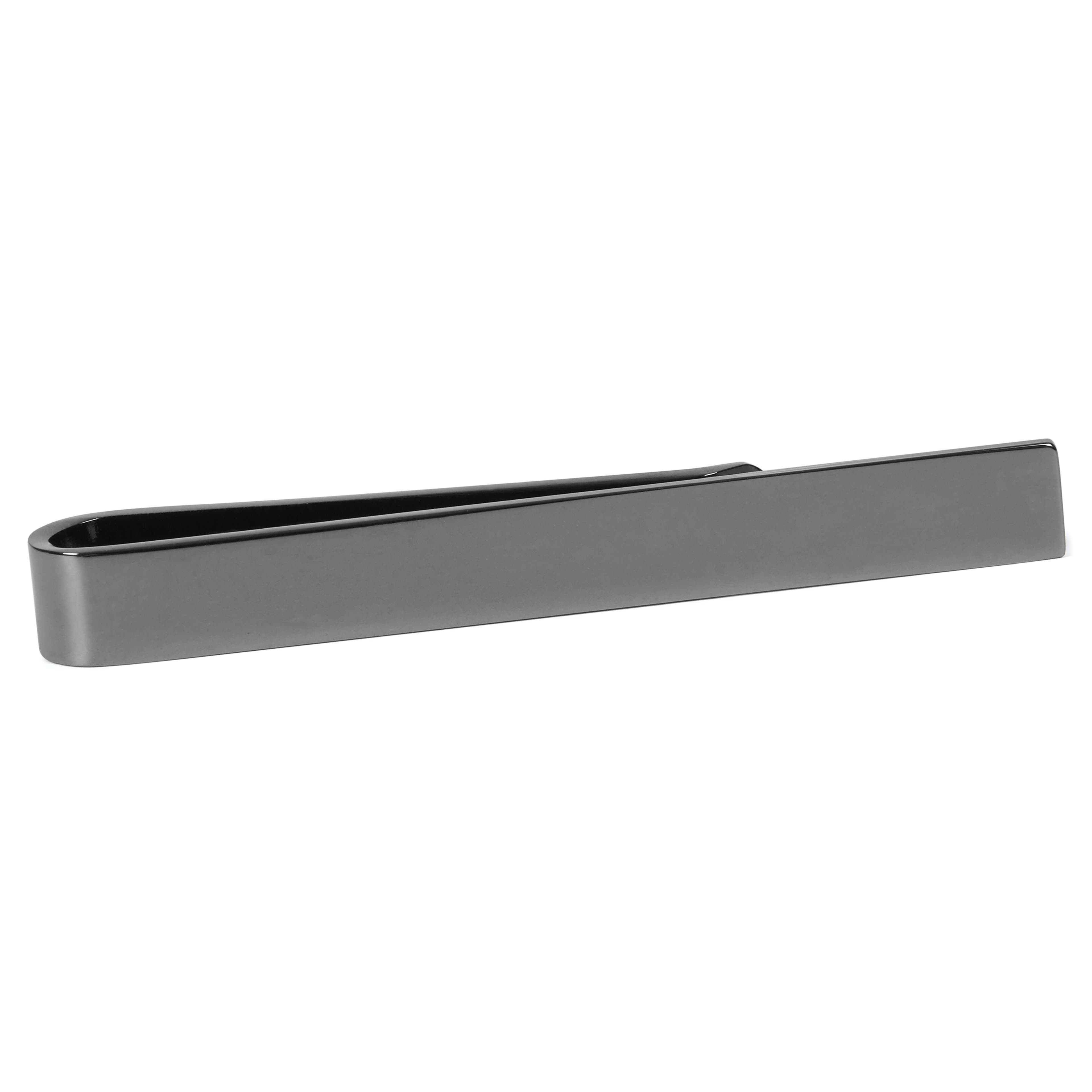The Tie Clip - Your Ultimate Guide
Learn everything there is to know about tie clips, tie bars, and tie accessories. From materials to wearing them correctly, and everything in between. All in 10 minutes.
A tie bar or tie clip is a neat and stylish metal accessory that secures your tie to your shirt. With our ultimate guide, you will learn how to wear a tie accessory like the tie bar / tie clip (used interchangeably in this article) to maximize its functionality and overall appearance of your outfit.
Why Wear a Tie Bar?
Do you have to wear a tie bar? No. But, there are so many great reasons to do so.
- It’s functional. A
necktie accessory will keep your neckwear in place all day. - It helps to keep your tie clean. No more dipping it in your spaghetti bolognese while wooing a dame, Lady and the Tramp style.
- It looks damn good and like any accessory, it’s a smart way to express your personal style. What man doesn’t want to look like he just stepped out of the pages of GQ?
- It’s representative. Tie accessories designed with logos or emblems can showcase an organization, hobby, team, cause, or corporation that you support or participate in.
- It keeps the upper portion of your necktie popped, if that’s your style. By pushing the tie fabric up a bit before fastening your clip, you provide your neckwear with a touch of fashionable slack and you’ll feel less constrained and look amazing to boot.
- If your shoulders are uneven. The tie bar will help your tie hang straighter.
- It's a handy gadget to use in a MacGyver moment, like when you have to pry something open or defuse a bomb.
The Types of Tie Accessories
The tie clip and tie bar are the most common versions of this stylish accessory, but we'll also cover the tie pin & tie tack, tie chain, and the tie strap.
The tie bar
A tie bar is a strip of folded metal similar in form to kirby grips. It slides over your tie and shirt placket to keep everything in place.

Perfect for men who want their tie to lay flatter or for men who prefer thinner, more delicate neckwear fabrics.
The tie clip
A tie clip is slightly more technical as it has a spring mechanism similar to a clothes peg that holds the tie in place.

Perfect for men who wear bulkier knitted or felt ties. While a tie clip can be used on more delicate fabrics, it may possibly damage them or cause them to pucker if the grip is too tight.
The tie chain
A tie chain secures your neckwear to your shirt with a loose chain. It fastens to the placket with a bar, or hooks onto a button behind the tie. The positioning of a tie chain is the same as that of a tie clip. The width of the bar that attaches to the placket should be approximately one inch shorter than the width of the tie to ensure it remains concealed.

Perfect for the man who prefers to have some movement in their tie or want to rock a more retro look. The chain should be long enough to have some slack and not cinch the tie. Remember, the amount of slack determines how much tie movement there will be.
The tie pin and tie tack
Tie pins and tie tacks are essentially one and the same. They work by piercing the center of your tie. A small clasp at the back secures the pin and fastens it to your shirt with a chain. Positioning on the tie can be the same as a tie bar or even as high up as just below your knot dimple.
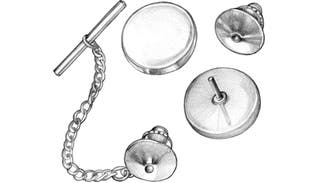
Perfect for men who want to focus on fashion more than practicality. If you wear the pin higher up, the effectiveness of holding your tie in place goes down. Also, wear it only with looser weave or robust tie fabrics as the pin can mark or snag a more delicate tie.
The tie strap
Tie straps are a relatively new innovation. These small plastic or fabric straps thread through the label on the back of your tie and secure to two of your shirt buttons. The strap keeps your tie in place while allowing some vertical slack for comfort of wear.

Perfect for the man, who wants to restrain his neckwear without damaging the fabric or wearing a showy accessory.
How to Wear a Tie Bar
Men’s tie bars are elegant and simple to use, however, here are a few pointers with images to help ensure that you wear them correctly.
Length of the tie bar
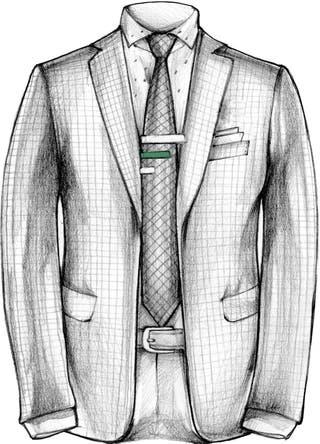
The cardinal rule when choosing a tie bar is to ensure that it’s suitable for the width of your tie. Aim for one with a length that’s approximately 70-80% of the necktie’s width. You can go shorter, but definitively not longer.
Height of the tie bar
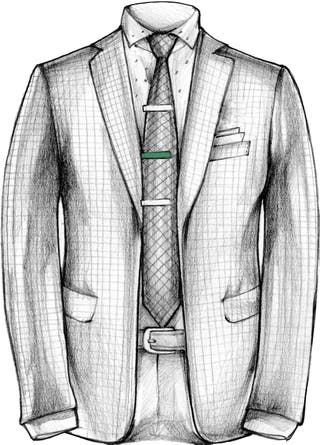
Tie bar placement should always be between the third and fourth button from the top of your shirt. Place it too high and it loses its functionality; too low and it will be obscured by your jacket and the element of style will become obsolete. You want it to be approximately level with your jacket pocket.
Angle of the tie bar
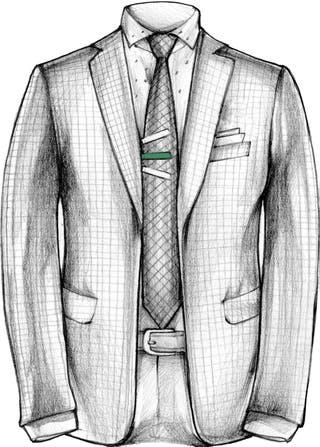
Make sure the tie bar is placed horizontally. Straight lines look neat and tidy. Some will argue that if you find yourself in a situation where the only tie bar you have is too long, you can wear it at an angle. But in our opinion, you're better of going without a tie bar in that case.
Include your shirt
The tie bar has a function; To keep the necktie in place, so don't just clip your tie. Include your shirt placket too or your neckwear will be flapping in the wind.
Keep it smooth
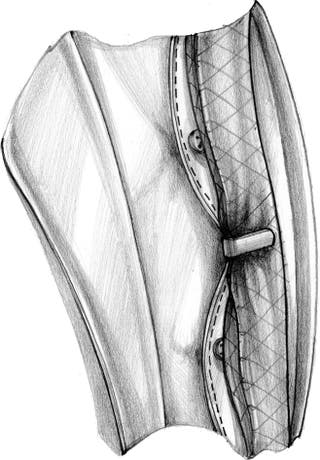
Don't push your tie bar too far in creating a pucker or cinch in the fabric of your tie. Make sure your neckwear is smooth and flat after positioning.
Extra Tips
Above are the most important rules to know, but we've put together a few extra tips that might give you that extra edge.
Some slack
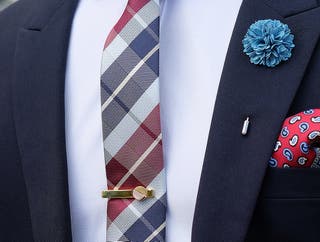
As you’re positioning the clip, pull your tie up slightly before fastening. The extra slack allows for unimpeded movement throughout the day and it also adds depth to your outfit.
Match metals
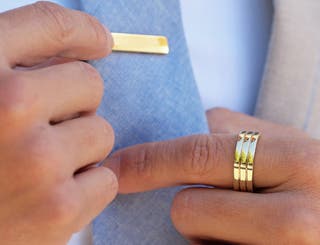
Try to match the metal of your tie bar to that of your cufflinks or belt buckle. In this way, you’ll add a refined and cohesive look to your ensemble. Read more about colour theory here, for more details on working with colour in your outfits.
Have fun

Use a tie bar to bring an element of fun to your look. A flash of colour or a little bling can add whimsy to a formal outfit and also makes a great conversation starter.
No waist coat

Don't wear a tie bar with a waistcoat. The waistcoat holds your neckwear in place so the bar is pointless, much like wearing suspenders with a belt. We've experimented with it, and even though a recent trend has been to wear both together, our opinion remains the same.
Be your own man
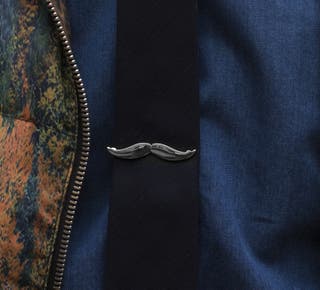
Choose something that suits your own personal style. A tie clip that features a skull with rhinestone eyes will work if you know that you can pull it off. If you're just starting out, a silver-toned tie clip is always a sound choice, since the silver colour falls outside the colour wheel, and therefore works well with almost everything.
The occasion

Choose your tie bar according to the occasion. They aren’t appropriate to wear to a funeral or a job interview for instance - too flashy. But to a wedding or while gambling in Monte Carlo? Why not?
Careful with stripes
Avoid wearing striped tie bars with a striped shirt or tie. Reserve patterned bars for plain shirts and ties.
Materials Used for Tie Bars
Most tie accessories are made out of metal. The more elaborate selections are embellished with materials such as wood, fabric, gemstones, pearls, enamel, plastic, resin, and glass. Choosing the right tie clip material for your needs is paramount as you should consider its form, function, and durability when it comes to wear and tear.
Alloy tie bars
Alloys are a mixture of two or more elements. This makes them strong, formable materials to use for making jewellery. Often, they’re plated with gold, silver, or platinum making them especially attractive options for tie accessories.
- Pro: Very affordable
- Pro: Strong metal
- Pro: Can be plated
- Pro: Scratch-resistant
- Con: Care of each alloy depends on base metal
- Con: Can contain nickel, an allergen
Brass tie bars
Brass is a copper and zinc alloy with a signature golden tone. Brass is often used in jewellery-making because it doesn’t tarnish like silver and it’s more economical than gold. With proper care, brass tie bars can be long-wearing and an attractive alternative to other metals.
- Pro: Similar in appearance to gold
- Pro: Less expensive than gold
- Pro: Doesn’t tarnish as easily as silver
- Pro: Easy to clean
- Con: Can tarnish over time without proper care
- Con: Uncoated brass is not engravable
Stainless steel tie bars for men
Stainless steel is by far one of the strongest and most durable metals used for making tie bars. You can count on it to last a lifetime and beyond without ever displaying scratches or defects. This material also comes in a variety of finishes, like gold-toned, rose gold-toned, and black to go with all of your looks.
- Pro: Super durable metal
- Pro: Available in a variety of attractive finishes
- Pro: Scratch-resistant
- Pro: Won’t tarnish
- Pro: Engravable
- Con: Shows smudges and fingerprints
- Con: Can contain nickel, an allergen
Sterling silver tie bars
Sterling silver is comprised of silver mixed with other metals to increase its hardness and durability. Though it does tarnish easily, it also cleans up effortlessly. Sterling silver contains no nickel, so it’s a hypoallergenic option for jewellery design.
- Pro: Engravable
- Pro: Nickel-free
- Pro: Easy to clean
- Pro: Very aesthetically-pleasing
- Con: Scratches easily
- Con: Tarnishes easily
- Con: Metal is on the softer side
Titanium tie bars
Titanium is lightweight and three times stronger than steel. Due to its incredible durability, it’s perfect for crafting jewellery. Titanium is less expensive than most other metals and it’s also hypoallergenic.
- Pro: Engravable
- Pro: Lightweight
- Pro: 100% hypoallergenic
- Pro: Scratch- and dent-resistant
- Pro: Easy to clean
- Con: Lacks the value of gold and silver
- Con: Can not be soldered, limiting design possibilities
Tungsten tie clips
Tungsten is another attractive, extremely hard metal that’s wonderful for creating jewellery. Its lustrous finish is resistant to wear and tear as well as tarnish. It’s affordable and hypoallergenic, making it a great tie bar material.
- Pro: Extremely scratch- and tarnish-resistant
- Pro: Finish will retain its lustrous quality
- Pro: Engravable
- Con: Heavier in weight
- Con: Trendy material that may go out of style
Your Party Chatter Version of Tie Clip History
Necktie accessories arrived on the scene in the mid-19th century.. Original neckties were often made with luxurious materials such as silk and lace that were lightweight and likely to blow out of place. Enter the tie pin (or tack) which was initially used to secure neckwear and seemed to do the job sufficiently. However, in 1926, when tie design evolved by being cut on the diagonal to avoid lifting and creasing, the tie bar and clip came about and became the tie accessory of choice. Stabbing and maiming your necktie fabric was no longer necessary!
Post WWII, the idea of corporate branding evolved and tie bars were the perfect medium for linking you to your company or club. As the years passed and “flower power” became a thing, styles were more casual in nature and tie accessories fell out of use. Luckily for the well-dressed man of today, men’s fashion is rediscovering its classic roots and tie accessories are once again taking center stage on neckwear around the world.
Inspiration
A Final Word
While we’ve already established our dos and don’ts, every generation has its rebels who buck the status quo and wear whatever they want. So, as with all fashion, use your own discretion and wear tie accessories in a way that accentuates your own personal brand of style.
You Asked – We Answered
How do I wear a tie bar?
You should wear a tie bar between the 3rd and 4th buttons from the top of your shirt. Simply slide it horizontally over your tie and shirt placket. It should be approximately level with your jacket pocket.
Can I wear a tie bar to a funeral?
As a general rule, avoid wearing a tie bar to a funeral out of respect for the sombreness of the occasion.
Can I wear a tie bar to a wedding?
Sure you can! A wedding is a great time to whip out your heirloom piece and steal attention from the bride. Just kidding. Keep it classy.
Can I wear a tie bar with a tuxedo?
Considering tuxedos are worn with a bow tie, you should not wear a tie bar obviously.
What is a safety chain?
A safety chain secures your tie accessory to your shirt button. This ensures that it won’t get lost when you’re flailing wildly at that company party.
How should I care for my tie bars?
Most tie bars should be cleaned as you would any other jewellery, depending on the material. Avoid getting them wet and keep them polished with a soft cloth. Also, store these accessories in a separate bag or a tie bar case to prevent them from getting scratches and being exposed to air.
How should I store/transport my tie bars when not in use?
You can purchase a handy tie bar case for travel. These keep the pieces separate to avoid scratching.
Which side of the shirt do I clip my tie clip on?
You need to attach the bar to the placket, so you can really only wear it in one direction.
Can I wear a tie bar with a sport coat or cardigan and jeans?
You can definitely wear a tie bar with a sport coat or cardigan and jeans. This is also a great opportunity to wear more whimsical bars, such as the skull we mentioned above.
Is it tacky to wear the same tie bar every day?
Not at all as long as your wear a subtle neutral one. Of course, as you fall in love with wearing tie accessories, your collection will grow and you’ll have more choices.
Do I have to wear a button down shirt with a tie and tie bar?
Considering that the function of a tie bar is to attach your tie to your shirt to keep it in place, the answer is fairly obvious.
Can I wear a tie bar and tie pin at the same time?
Wear a tie bar, cufflinks, and a pocket square together, sure. But, a tie bar and tie pin both serve the same function, so wearing them together is pointless. Then again, you might start a new trend, so you do you.
Can I wear a tie bar with a skinny tie?
Sure, you can wear a tie bar with slender neckwear as long as it isn’t longer than the width of your tie.
Can I wear a tie bar at an angle?
If you must, you can wear a too-long tie bar at an upward angle to hide the excess. But only in a moment of absolute desperation. A better option might be to just go without a tie bar.

